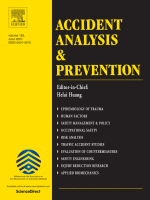
A paper titled “Spatial analysis of harsh driving behavior events in urban networks using high-resolution smartphone and geometric data” authored by Apostolos Ziakopoulos was recently published in Accident Analysis & Prevention. Naturalistic driving big data collected through the OSeven smartphone application were map-matched to the segments that each driver traversed, and thus geometrical, road network and driver behavior spatial data frames were obtained per road segment. Segment length and pass count are positively correlated with harsh braking frequencies, while gradient and neighbourhood complexity are negatively correlated with harsh braking frequencies. Curvature, segment length, pass count and the presence of traffic lights are positively correlated with harsh acceleration frequencies. ![]()










































































































































































